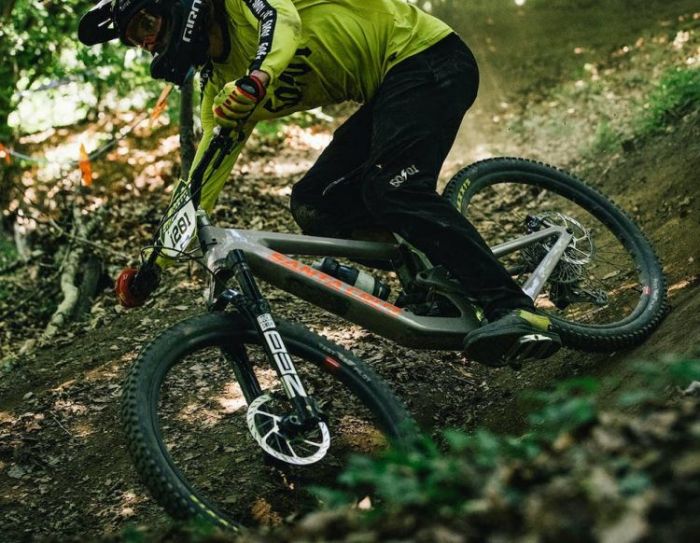Trek Stache 7
- Price: 2,499 USD
- Travel: Front 120mm
- Wheel: 29X3″
- Drivetrain: SRAM, 1×12
What we like about it: Trek Stache 7 is a big-wheeled hardtail forest-road bike with a longer damping fork and more responsive liquid disc brakes to bring you more riding fun.
What don’t we like about it: For more professional upward climbing, we couldn’t have done it more easily.
Rating (4.7/5)
Introduction
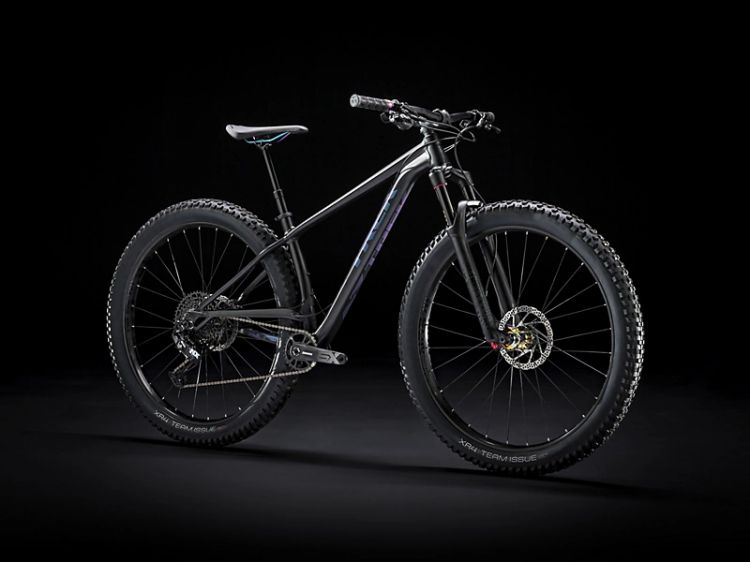
The Trek Stache 7, one of the leading hardtail off-road ridders, has a racing pedigree and a long-standing reputation, and it puts toughness into its design. When I first saw this big truck, I was shocked by its Bontrager XR4, 29×3.00” huge wheels.
In addition, the alpha platinum aluminum which is more robust and can match better ground to outdoor wear, highly mobilized Shimano hydraulic disc, MT501 lever hydraulic disc, and SRAM-grade drivetrain to give a better answer to riding. Over the past eight weeks, I’ve taken the Trek Stache 7 on adventure after adventure through wooded trails and gravel roads. And I’ll elaborate on the Trek Stache 7’s off-road and on-road performance as well as key features, components and specs, and comparisons of other versions.
Learn More: Trek Stache 5 Review-Hardtail Forest-Road Bike
Off-road Performance
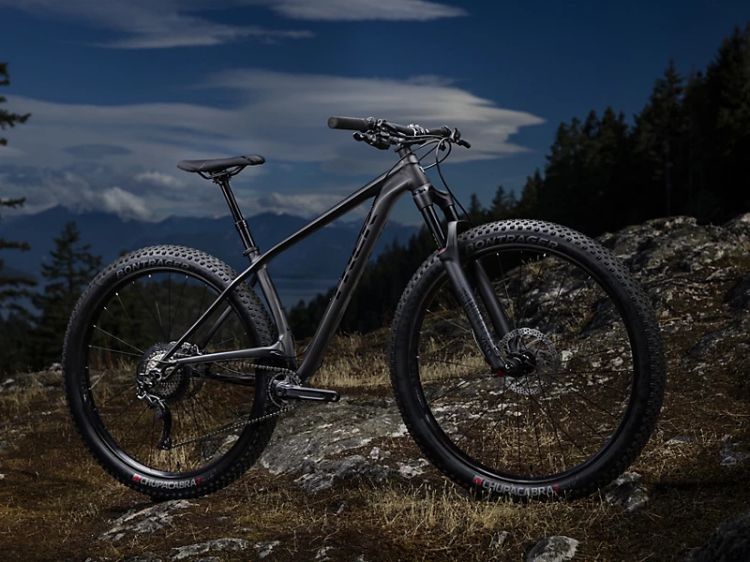
If you were to ask me what my greatest joy is in riding? I would say the exploration of uncharted territory. The Trek Stache 7 and I spent eight weeks riding outdoors, and while I was interested in his big, brutal tires from the start, when I got on the Trek Stache 7, the fully inflated Bontrager XR4, 29×3.00˝ vacuum tires weighed me down with a resilience that seemed to tell me I should be ready to do a sprint. ready to go.
This time I chose to ride through a rugged, root-strewn, and rocky forest road. As I began to pedal rhythmically forward, whether through the obvious small bumps or rocks or hidden potholes, the RockShox, 120mm fork was efficient but also made this test difficult. Although I have to admit that through some of the corners, the nimbleness is lacking compared to the more agile smaller size, such as the 27.5-inch Trek Remedy, which requires more concentration. The Trek Stache 7’s unrelenting neglect of crushing in the face of the ever-present obstacles made me feel extremely excited, and my wheels felt like they were floating over the bumps.
Experience
I was struggling to tiptoe up the mountain as I climbed halfway up. And I was honestly starting to get a little bored with the alpha platinum aluminum, which would have been more specialized in, say, oclv mountain carbon, effectively reducing body weight, although that would have meant a further increase in price at $2,499. The good thing is that the Trek Stache 7 sacrifices the weight of the rear guts compared to the fully stocked model. So I can’t ask too much of it, I mean it’s already done enough. The lack of a rear shock on the ascent reduces the amount of letdown and makes climbing easier already.
I would adjust the SRAM SX Eagle 1×12 drivetrain option to the maximum when I wanted more high speed. But you also have to be careful if you pull into a gentle section of the road, remember to shift the gears down. Otherwise, you will cause a kick in the pants and cause the bike to lose control. Just like me, but the good thing is that I took an effective Shimano hydraulic disc, MT501 lever braking at the moment of the rollover, not to my posture is too ugly. I have to say that this is a low-level mistake, you should try to avoid.
Although for a hardtail bike, it is very capable of dispatching excitement when speeding down the terrain. Of course, for more safety reasons, I would keep adjusting my stance and lowering the rear end during speed descending. Although you will feel a little tired and you have to take into account the bumps on the road, this kind of best effort to control the inertia with a sense of control will honestly give you a fantastic riding feeling than a full shock model with the rear shock.
Road Performance
The experience of riding on forest roads would have made me curious about the Trek Stache 7 on gravel roads. Although I had more trust in it due to its tough style. On the weekend, I pulled into the countryside away from the city and the openness and the fragrance of the dirt made me ignore the varied terrain. I realized it was a newly paved gravel road when more rocks and thicker sand than usual appeared before me. I would have thought at first that Trek Stache 7 might beckon, surprisingly making the Alpha Platinum Aluminum, which I had previously complained about, more resistant to striking friction in the face of a lot of flying sand and gravel.
Those of you who ride gravel a lot should know that only wider and tougher tires can generate enough traction on the loose as if you are climbing 3% uphill. And the 29×3.00˝ Bontrager XR4 tires fit the bill for me. Combined with the RockShox, 120mm shock front fork, it never hesitates to run right over obstacles even when there is more gravel.
Experience
As the ride progressed, after longer ups and downs, I realized I was heading into hilly terrain. The SRAM SX Eagle, a 1×12 drivetrain combination of the same SRAM-grade cranks and rear cassette, evened out the power drive for me, switching gears smoothly so I didn’t get stuck. Honestly, with about 49mm of travel, a 72.3°seat tube angle with the Bontrager Arvada, and a 138mm wide saddle. I was able to withstand my anxiety without any back pain, which was reassuring enough. My only complaint is that the Trek Stache 7 does not offer more water bottle holders than some road bikes. Although it’s not common for people like me to take the Trek Stache 7 on an endurance ride.
Main Features
Frame
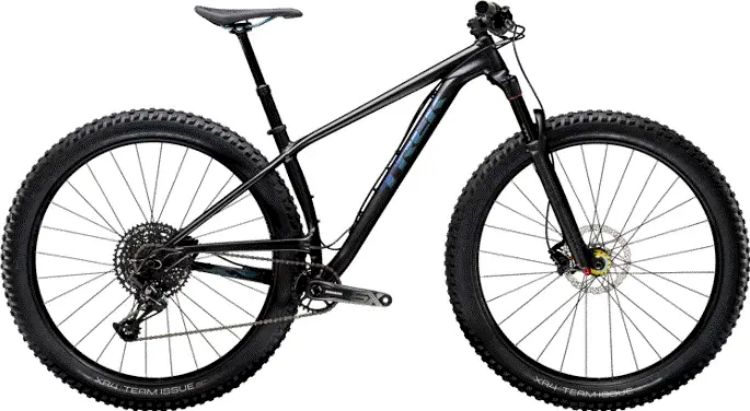
In terms of materials, there are many mid- to high-end hardtails that will use carbon to further reduce weight. It’s clear in the face of the Trek Stache 7’s design that it favors a tougher style, opting for the more friction-resistant Alpha Platinum Aluminum alloy.
In the appearance of the use of internal derailleur & dropper post routing, better simple design. If you ride at high speed the process of rarely appearing in the key line is dragging the problem. In addition, the color, not too beautiful color, more understated and calm black for some people who love rich colors, may not be very attractive.
Bontrager alloy handlebars will be more friendly for riding position. Thread rotation pattern design can also increase the larger friction, and grip feeling adequate. If you need a longer ride, the Bontrager Arvada, 138 mm wide saddle is more moderately comfortable to sit in.
Geometry
My feelings while riding the Trek Stache 7 were not overwhelmed by his cosmetic toughness. The 72.3 ° head tube angle and near upright seating position were relatively muscle-friendly in terms of stress. As I mentioned earlier, I didn’t feel any more arm soreness after traversing the gravel roads for nearly an hour and a half.
The 67.8-degree head tube angle is moderate for a hardtail. Although I know this value is slightly sharp compared to the average full shock. Such as the 66.0-degree head tube angle of the Cannondale Habit 5. So the Trek Stache 7 hardtail is not suitable for climbing more difficult ascending terrain. But if it is a speed descent it will be very focused on the thrill of enjoyment.
The 102mm length of the trail is the ultimate in steering for having such huge 29×3″ wheels. I faced more urgent steering during my trip through the woods, and while it didn’t feel as nimble as the 27.5 wheels, it didn’t make me miss much.
Components and Specifications
Bontrager XR4 Team Issue, 29×3.00″ Tires
Whether it’s roots and rocks on forest roads or sand and gravel on gravel roads. The 29×3.00″ Bontrager XR4 tires are always well equipped to handle them. The wide enough vacuum tires are unquestionable in their ability to crush and stabilize the grip on soft ground. It is like floating against the ground when driving at a fast speed and can absorb the vibration from the ground. Likewise, riding on muddy roads after rain reduces the chance of skidding.
Although the huge pair of the 29×3.00″ Bontrager XR4 wheels have some suppressive force on the alpha platinum aluminum frame than having smaller 27.5″ wheels. The Trek remedy for example is light and nimble. But if you are dealing with more unknown environments, trust me, it will provide you with plenty of security. In the field, unlike the inner tube tires, vacuum tires will have some self-healing ability for small cuts and even tears. To be prepared, you can also carry a bottle of self-replacing device.
Add some thoughts on tires. For example, 3″ tires, which are currently biased towards medium width tires, would be balanced.
RockShox Yari RL, Shock Front Fork
Every rider is not satisfied with smooth and flat roads, we always expect more and more adventures. And without a good shock fork, you can only play circles within the city roads. I have to say the 120mm RockShox fork is the one that shines on the wild and rugged roads.
I was able to ride some steep and undulating uphill sections with more resilience to help absorb the crushing of the body against the ground, even when riding at top speed without hesitation. And with Solo air springs, further reduces the weight compression. The 120mm RockShox front fork, is highly efficient in the face of constant bumps and undulations while riding.
SRAM SX Eagle 1×12 Drivetrain
I have a lot of enthusiasm for introducing you to the SRAM class 1×12 drivetrain. At first, I thought the 1x would be too simple compared to the 2x or even 3x drives of many race bikes. And even the speed options were not as extensive. But when I was really on the trails, facing the unexpected flying bags and ascending sections. The SRAM SX Eagle 1×12 drivetrain with SRAM cranks and rear cassette, was able to give me the most support in the shortest reaction time.
If you are a newbie, remember to shift the gears to normal mode when you adjust the high-speed mode to ground up at the end of the climb for a gentle ride, otherwise, it is easy to have pedaling problems. I think this conversion will be easier for SRAM class 1×12 speed. And at the same time, it gives me a very smooth feeling instinct for acceleration, without a bit of lag.
Shimano Hydraulic Disc, MT500 Caliper

The hydraulic disc brakes that most bikes insist on using today are very good news for rider safety. Whether I’m descending a steep forest road or steering through a sudden turn. The Shimano hydraulic disc, MT501 lever gives you more than enough braking power.
The feel of the handling is also moderate, not too soft and not too hard. From my riding experience, the MT501 lever is not as powerful as the Shimano hydraulic disc and M615 because of the MT500 caliper. But if you are not racing and rarely challenge high-altitude mountains, the Shimano hydraulic disc, MT501 lever is still enough. But if you are not racing and rarely challenge high-altitude, Shimano hydraulic disc, the MT501 lever is still enough.
Other Versions Of Trek Stache 7
For this ride test, we purposely chose the 2019 Trek Stache 5 (priced at $1,889) for a side-by-side review. The 2019 Trek Stache 5 will be much easier to weigh in terms of the power we control alone. The body weight is 13.4kg, I think because of the enhancements made to the Trek Stache 7 on some key components. For example, the 2019 Trek Stache 5 has chosen Shimano HG50 1×10 drivetrain. In comparison, the range of options is not as wide as the Trek Stache 7. So the 2019 Trek Stache 5 will be more stressful on the same ascending climb.
Though in terms of fork performance, the two are nearly identical. Due to the insistence on more powerful tires, Trek Stache has always favored Bontrager. A 29×3.00” tire combination with 120mm of travel carrying air springs. So the performance is the same in the face of the road obstacle crushing and the handling of bumps. In the more critical brake braking, due to the passage of time, the Trek Stache 7 will perform even better. Because it used a more modern Shimano hydraulic disc, MT501. From my point of view, the Trek Stache series have shown an efficient and strong riding performance.
What we like about it?
- Cost-effective hardtail with race pedigree to achieve the freedom to ride across.
- Stronger aluminum body, resistant to outdoor rough friction.
- Bontrager, 29×3.00″ tires with sufficient lapping pressure provide strong grip and traction.
- RockShox 120mm shock forks with solo air springs efficiently absorb bumps from the ground, providing a more comfortable ride.
- SRAM 1×12 drivetrain Shimano-class liquid discs, providing long-lasting smooth sexual performance support.
What don’t we like about it?
- Unable to make a lighter weight choice.
- Longer endurance rides can’t do much more.
- The color is more subdued, and can not meet the beautiful attraction.
FAQ
- What is the frame material of the Trek Stache 7?
Trek Stache 7’s frame material is Alpha Platinum Aluminum.
- What is the drivetrain of the Trek Stache 7?
The drive train of Trek Stache 7 is SRAM SX Eagle, 1×12 speed.
- What is the maximum tire size for the Trek Stache 7?
The maximum tire size for the Trek Stache 7 is 29×3.00”.
- What is the size recommendation for the Trek Stache 7?
SM – 153cm-167cm MD – 161cm-172cm
MD/LG – 165cm-179cm LG – 177cm-188cm
XL – 186cm-196cm
| Bicycles | Price | Gear | Brakes | Tires | Click view |
| Trek Roscoe 8 | $2399 | 1×12 | Shimano 4-piston hydraulic disc, MT4100 lever, | 27.5/29×2.60″ | Click view |
| Cannondale Trail SE 1 | $2225 | 1×12 | TRP hydraulic disc | 29 x 2.5″ | Click view |
| Kona Honzo DL | $2699 | 1×12 | Shimano MT410 Hydraulic | 29×2.5″ | Click view |
| Cannondale Habit 5 | $2525 | 1×11 | Tektro hydraulic disc | 29 x 2.4″ | Click view |
Trek Roscoe 8 vs Trek Stache 7
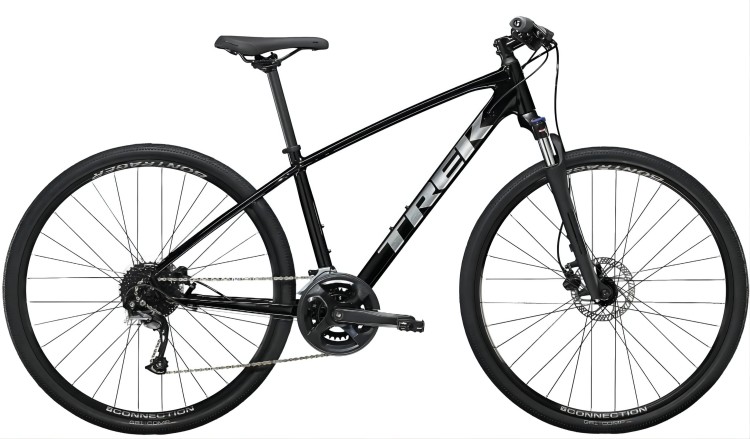
Between the Trek Roscoe 8 and the Trek Stache 7, which are close to the same price. We see some significant differences. The first is the tire size. The Trek Roscoe 8 can be fitted with the more versatile Bontrager, 27.5×2.60” tires, while the Trek Stache 7 has always been positioned as a tough 29X3″ tire. As I’ve mentioned repeatedly, if you’re more into off-road or some uneven road riding. Then wider, thicker tires will suit you better than skinnier tires. With the gravel road craze, if you are also a fan of gravel riding, then you need a bigger pair of tires. Even though they are all the same brand of vacuum tires. The two are tied in terms of SRAM drivetrain and Shimano brakes. Although there are version upgrades, the proximity does not produce more changes in performance.
Regarding the damping fork, the Trek Roscoe 8 is set up with a longer 140mm RockShox fork. In terms of weight, the Trek Roscoe 8 will be further weighted by not having Solo air springs on board. In addition, the 74.7° seat tube angle of the Trek Roscoe 8 is wider than the 72.3° seat tube angle of the Trek Stache 7. Although I prefer the smarter Trek Stache 7 in terms of absorbing energy from bumps. This also means more effort when climbing the same section of ascending terrain. Although the Trek Roscoe 8 will be more relaxed when riding on gentle roads.
Trek Roscoe 8 Review – The Off-Road Bike You Can’t-Miss
Cannondale Trail SE 1 vs Trek Stache 7
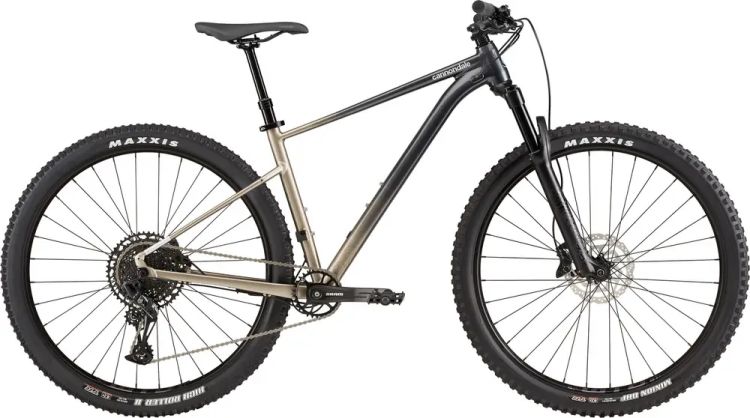
The Cannondale Trail SE 1 has been designed with an upgrade in mind. In terms of tire choice, compared to the Trek Stache 7, the former uses (F) Maxxis Minion, 29×2.5″ tires, which are a bit thinner than the Trek Stache 7 in terms of thickness. Although visually, both are equally strong. However, the Cannondale Trail SE 1 has less drag when you feel it on the road. Also, the compression on the body will be lower, but when it comes to the comparison of lapping force and grip, it will have a slight disadvantage.
In addition, there is a relatively big hit. Comparing the data from the reviews purchased, the Cannondale Trail SE 1’s Smartform C2 alloy body is not as stiff as the Trek Stache 7’s alpha platinum aluminum, and you can feel this from the visual alone. Although both seem to be very strong in the outdoors for a short time.
In terms of 1×12 drivetrain and fluid disc selection, they are nearly identical, with only minor brand differences. I would be more comfortable with the Trek Stache 7’s Shimano brakes.
Kona Honzo DL vs Trek Stache 7
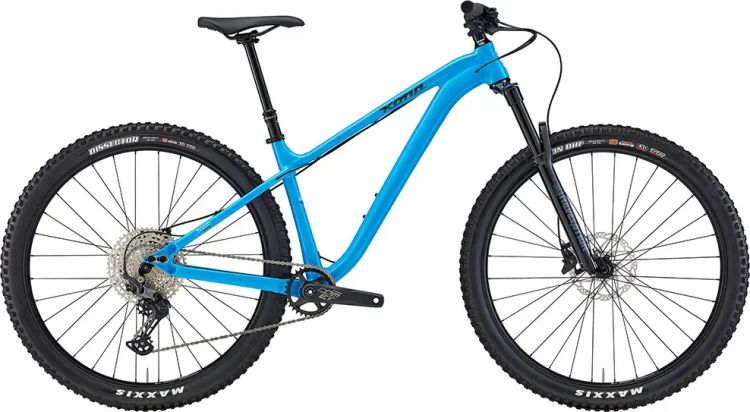
In my opinion, the Trek Stache 7 is innovative with its 29×3″ wheels. For hardtails, speed is very important. If you’re interested in the Kona Honzo DL, you’ll find that it’s in the middle of the pack with the more versatile Maxxis Minion 29×2.5″ tires. When comparing the two, the Trek Stache 7 has a slight advantage in terms of speed, and the Kona Honzo DL is not as strong as the Trek Stache 7 in terms of lapping force and skid resistance.
Although both have a 1×12 drivetrain, the Trek Stache 7 has more room for MT501 upgrades when it comes to Shimano’s brake components. So if you are more concerned about brake braking, you can trust Trek Stache 7. In addition, the Kona Honzo DL opts for the RockShox Revelation, a 140mm longer damping fork, which will give you an advantage over the Trek Stache 7’s 120mm. This also means that the Kona Honzo DL will perform more aggressively when hitting bigger bumps. However, it should not be overlooked that the Trek Stache 7 is equipped with a Solo air spring assembly, which has done a lot to further damping and weight reduction.
Learn more:Is Kona Cinder Cone Worth Buying? – [Kona Cinder Cone Review]
Cannondale Habit 5 vs Trek Stache 7
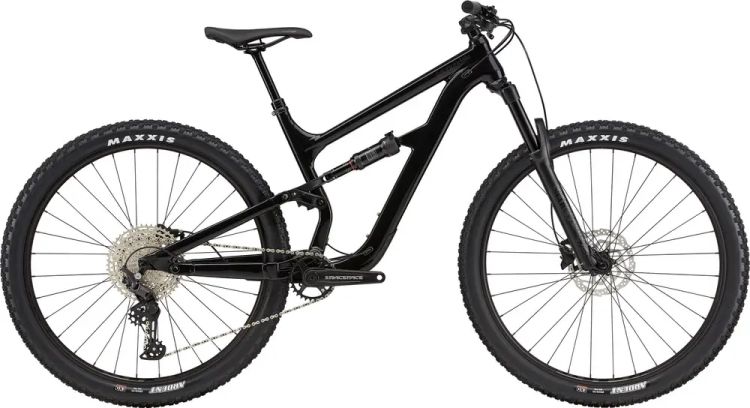
If you prefer a lighter, faster ride and you’d choose a hardtail, the Trek Stache 7 could be the bike you consider. But if you choose to ride longer and farther, then I recommend that you are more suitable for the full-suspension system. The Cannondale Habit 5 is one of the better series of full shock bikes, with RockShox 130mm rear, and 140mm front suspensions. But the weight can’t be as friendly as the Trek Stache 7 due to the suppression of the rear shock. As I said, for endurance racing, the Cannondale Habit will reduce the strain on your fitness.
Also, in terms of tire size, the Cannondale Habit is moderate, with the 29 x 2.4″ Maxxis Ardent outer tire chosen. This is sufficient for long, rough, and bumpy treks. But for faster sprints, it may not be as fast as the Trek Stache 7. Also the Shimano Deore 1×11 drivetrain is not that superior, when compared to the SRAM 1×12 drivetrain.
In case, the above comments are helpful to you, please remember to share the subscription. Have a great day!
Cannondale Habit 5 Review – Mid-Range Treasure Full-Suspension Off-Road

![[Orbea URRUN 10 20mph Review] – Best Used By People Who Enjoy Riding To Get AFeel For The Mountains!](https://bestbikeselect.com/wp-content/uploads/2023/09/2023-Orbea-URRUN-10-20mph-35_-1024x1024.jpg)
![[Specialized Turbo Como 5.0 Review] – Good Choice?](https://bestbikeselect.com/wp-content/uploads/2023/08/2023-Specialized-Turbo-Como-5.01_-1024x1024.webp)
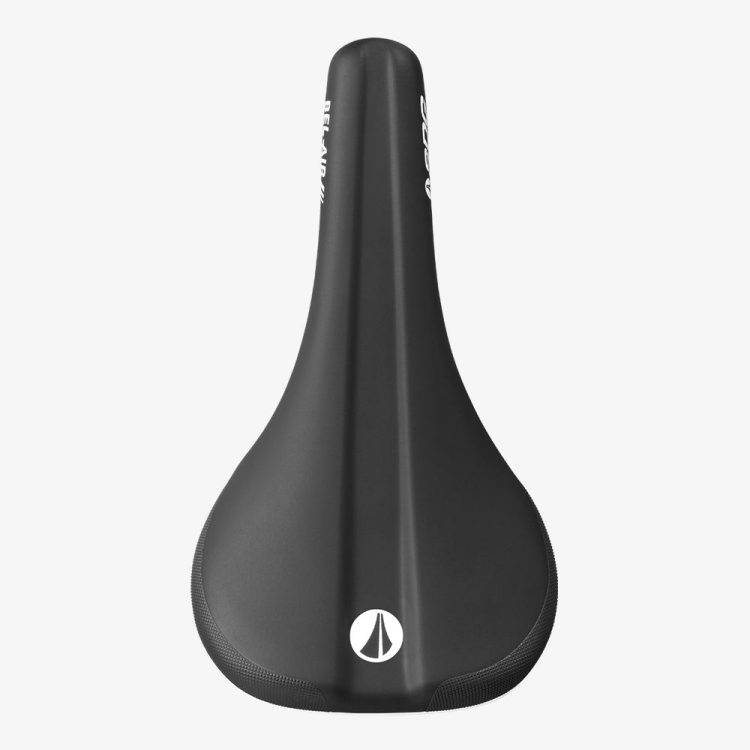
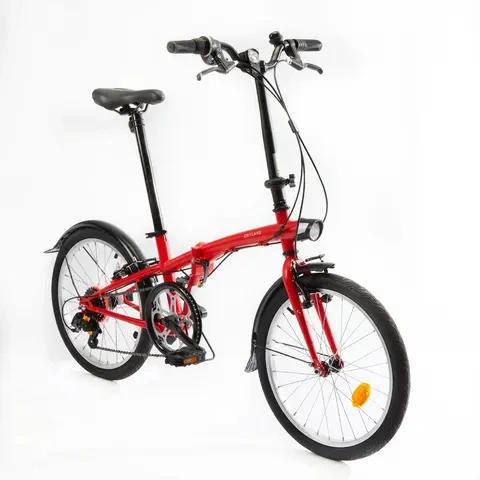

![2025 Built for Champions:[Orbea ORCA M21eTEAM PWR Review]](https://bestbikeselect.com/wp-content/uploads/2025/01/ORCA-M21eTEAM-PWR-1024x885.jpg)
![2025 Conquer Any Trail [Santa Cruz Bronson R Review]](https://bestbikeselect.com/wp-content/uploads/2025/01/Santa-Cruz-Bronson-R-1-1024x768.webp)
![2025 The All-Terrain Beast [Santa Cruz Hightower 3 MY24 Review]](https://bestbikeselect.com/wp-content/uploads/2025/01/Santa-Cruz-Hightower-3-MY24-1024x768.webp)
![The Best Comfortable Leisure Bike of 2025 [ Trek Verve 2 Lowstep Gen 5 ]](https://bestbikeselect.com/wp-content/uploads/2024/12/Verve-2-Lowstep-Gen-5-02-1024x681.png)
![2025’s Top Endurance Bikes [Cannondale Synapse Carbon 3 L Review]](https://bestbikeselect.com/wp-content/uploads/2025/01/Cannondale-Synapse-Carbon-3-L-1-1024x627.webp)
